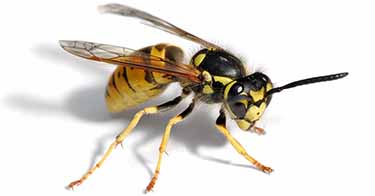Animals
Fastest Animals In The World - Top 12
Updated February 15, 2019
These are the fastest land animals in the world.
To make a fair list of the fastest animals in the world, we have excluded animals that reach their top speed in air or in water. If we would include birds in this list, the whole list would be filled with them. The fastest fishes can on the other hand compete with about the same speeds as the fastest land animals, but speeds in water and air are not really comparable. We have therefore compiled a list of the fastest land animals, that is, animals that reach their top speed on the ground.
However, it might be fun to know that the fastest animal all categories is the peregrine falcon, which can reach a staggering 389 km/h (242 mph) when diving.[1] The white-throated needletail is probably the fastest bird in horizontal flight, reaching speeds of 111.6 km/h (69,35 mph) flying straight.[2]
The world's fastest animal in water may be the sailfish. In tests, the Atlantic sailfish has reached speeds of 109 km/h (68 mph) while jumping.[3] Many sources states similar top speeds for tuna, marlin and swordfish, which can certainly be true since these three fishes have the same aerodynamic shape as and are closely related to the sailfish.
The world's fastest land animal relative to its size is a mite found in California. It can "run" 322 body lengths per second, which is equivalent to a human running at a speed of 2 000 km/h (1 300 mph).[5]
As a comparison, Usain Bolt, the fastest human in the world, has reached a top speed of 44.72 km/h (27.79 mph).[4]
Measuring how fast different animals can run is difficult for many reasons. For example, most animals are wild, and also, their top speed varies from individual to individual. Therefore, the figures in this list should not be regarded as exact. We have as always chosen to use only reliable sources, but many numbers seem to be based on estimates rather than measurements.
Examples of animals that can run at up to 60 km/h (37 mph), and therefore end up just outside the list, are zebra[6], leopard[7], spotted hyena[8], red kangaroo[9] and african wild dog[10]. Examples of animals capable of almost reaching 70 km/h (43 mph) are tiger[11], coyote[12], wildebeest[13] and gray wolf[14]. Wild donkeys are also fast runners, but we have not found any reliable source for their speed.
Here is a list featuring the 12 fastest animals in the world, ranked by their top speed on land.
To make a fair list of the fastest animals in the world, we have excluded animals that reach their top speed in air or in water. If we would include birds in this list, the whole list would be filled with them. The fastest fishes can on the other hand compete with about the same speeds as the fastest land animals, but speeds in water and air are not really comparable. We have therefore compiled a list of the fastest land animals, that is, animals that reach their top speed on the ground.
However, it might be fun to know that the fastest animal all categories is the peregrine falcon, which can reach a staggering 389 km/h (242 mph) when diving.[1] The white-throated needletail is probably the fastest bird in horizontal flight, reaching speeds of 111.6 km/h (69,35 mph) flying straight.[2]
The world's fastest animal in water may be the sailfish. In tests, the Atlantic sailfish has reached speeds of 109 km/h (68 mph) while jumping.[3] Many sources states similar top speeds for tuna, marlin and swordfish, which can certainly be true since these three fishes have the same aerodynamic shape as and are closely related to the sailfish.
The world's fastest land animal relative to its size is a mite found in California. It can "run" 322 body lengths per second, which is equivalent to a human running at a speed of 2 000 km/h (1 300 mph).[5]
As a comparison, Usain Bolt, the fastest human in the world, has reached a top speed of 44.72 km/h (27.79 mph).[4]
Measuring how fast different animals can run is difficult for many reasons. For example, most animals are wild, and also, their top speed varies from individual to individual. Therefore, the figures in this list should not be regarded as exact. We have as always chosen to use only reliable sources, but many numbers seem to be based on estimates rather than measurements.
Examples of animals that can run at up to 60 km/h (37 mph), and therefore end up just outside the list, are zebra[6], leopard[7], spotted hyena[8], red kangaroo[9] and african wild dog[10]. Examples of animals capable of almost reaching 70 km/h (43 mph) are tiger[11], coyote[12], wildebeest[13] and gray wolf[14]. Wild donkeys are also fast runners, but we have not found any reliable source for their speed.
Here is a list featuring the 12 fastest animals in the world, ranked by their top speed on land.
Advertisement:
12. Ostrich - 70 km/h (43 mph)
The largest bird in the world is also the fastest bird in the world on land. Unlike other birds, the ostrich cannot fly away from its enemies, but must run. Using their heavy legs, ostriches can reach speeds of 70 km/h (43 mph) on shorter distances, and on longer distances they can maintain 50 km/h (31 mph).[15]
When they run, they use their wings as rudders to help them turn.[15] If an ostrich gets caught by a predator, it has another weapon - its kicks, which are powerful enough to kill a lion or a man.[15]
The ostrich is also the animal that lay the largest eggs in the world. The very largest egg (which have been documented) was found on an ostrich farm in Borlänge, Sweden in 2008 and weighed 2.589 kg (5 lb 11.36 oz),[16] which roughly corresponds to 45 medium-sized chicken eggs.
When they run, they use their wings as rudders to help them turn.[15] If an ostrich gets caught by a predator, it has another weapon - its kicks, which are powerful enough to kill a lion or a man.[15]
The ostrich is also the animal that lay the largest eggs in the world. The very largest egg (which have been documented) was found on an ostrich farm in Borlänge, Sweden in 2008 and weighed 2.589 kg (5 lb 11.36 oz),[16] which roughly corresponds to 45 medium-sized chicken eggs.
11. Serval - 70 km/h (43 mph)
The serval is a medium-sized feline quite common in sub-Saharan Africa. For a cat, the serval has unusually long legs, which it can use to bounce 3 m into the air.[17] The serval mainly chases small mammals, such as mice and birds. If needed, it can run up to 70 km/h (43 mph).[17]
The cat breed Savannah is a cross between the serval and the domestic cat. Most countries have restrictive laws about owning a Savannah cat - usually the Savannah must be a certain number of generations from the serval.
The cat breed Savannah is a cross between the serval and the domestic cat. Most countries have restrictive laws about owning a Savannah cat - usually the Savannah must be a certain number of generations from the serval.
Advertisement:
10. Dog - 70 km/h (43 mph)
The fastest canid in the world is actually the domestic dog. Obviously not dog breeds like pug or chihuahua,
but the speed machine on the picture - the greyhound. Thanks to their speed, greyhounds are used as race dogs. There are many less accurate speed measurements made on greyhounds, but it's quite certain that they can reach 70 km/h (43 mph) on short distances.[18] Greyhounds can make excellent companions in families, but must be allowed to run.
9. Horse - 70,76 km/h (43.97 mph)
Horses come in all shapes and sizes, and some horse breeds can gallop really fast. The Thoroughbred is commonly considered to be the fastest horse breed in the world, and their average speed in races often exceeds 60 km/h (37 mph). The fastest measured top speed in a race is 70.76 km/h (43.97 mph), which was recorded when the Thoroughbred Winning Brew ran 402 m in 20.57 s (an average speed of 70.35 km/h, or 43.71 mph).[19]
Many sources claim that the slightly smaller Quarter Horse (photo) is even faster than the Thoroughbred on shorter distances, but we have not found any reliable speed measurement that confirms that.
Many sources claim that the slightly smaller Quarter Horse (photo) is even faster than the Thoroughbred on shorter distances, but we have not found any reliable speed measurement that confirms that.
8. Hare - 80 km/h (50 mph)
Hares are found almost all over the world, and one of the largest and most widespread species is the European hare (photo), also known as the brown hare, which mainly lives in Europe and Asia. According to the Swedish National Encyclopedia, hares can run at speeds up to 80 km/h (50 mph).[20] Exactly which species is not mentioned, but the only hares living in Sweden are the European hare and the mountain hare. Many less reliable sources state that the European hare, with its long, strong hind legs, is the fastest hare in Sweden, and thus the fastest land animal in Europe. This is probably true, because the slightly smaller and chubbier mountain hare can run at 70 km/h according to the Swedish Hunters Association.[21]
7. Mountain Lion - 80 km/h (50 mph)
The mountain lion is a mighty and powerful cat living in North and South America. It is known by other names, such as the cougar, puma, catamount and panther. The latter - panther - is sometimes used for other large cats such as the leopard and jaguar, especially if they have black fur - then they are called "black panthers". There is however no evidence that black mountain lions have ever existed.
In North America, mountain lions mainly chase deer, and with their powerful legs they can jump 12-13 m (40-45 ft) and reach speeds of 80 km/h (50 mph).[22]
In North America, mountain lions mainly chase deer, and with their powerful legs they can jump 12-13 m (40-45 ft) and reach speeds of 80 km/h (50 mph).[22]
6. Jaguar - 80 km/h (50 mph)
The jaguar is even larger than the puma and lives in Central and South America (a few are also found in southern United States). The jaguar is the only feline in the genus Panthera that does not live in Africa. The Panthera genus includes the four largest cats on earth - tiger, lion, leopard and jaguar.
The jaguar is a good swimmer and eats fish, turtles and caimans. On land, it chases different mammals such as deer. With a top speed of 80 km/h (50 mph),[23] it catches most of its prey on short distances.
The jaguar is a good swimmer and eats fish, turtles and caimans. On land, it chases different mammals such as deer. With a top speed of 80 km/h (50 mph),[23] it catches most of its prey on short distances.
5. Caracal - 80 km/h (50 mph)
The caracal is a slightly smaller feline living in Africa and southwest Asia. Sometimes called the desert lynx, it has some similarities to the Eurasian lynx - partly its size but mainly the tufts of hair on its ears. However, the two cats are not closely related.
The tufts of hair may enhance the caracal's hearing, and with dampening fur on its paws it makes little noise when attacking its prey.[24] Caracals hunt birds, rodents, rabbits and even gazelles, and they can reach top speeds of up to 80 km/h (50 mph).[24]
The tufts of hair may enhance the caracal's hearing, and with dampening fur on its paws it makes little noise when attacking its prey.[24] Caracals hunt birds, rodents, rabbits and even gazelles, and they can reach top speeds of up to 80 km/h (50 mph).[24]
4. Lion - 80 km/h (50 mph)
The lion is the largest predator in Africa and the second largest feline in the world after the tiger. Among the lion's prey are antelopes, gazelles, wildebeest and zebras, all of which are fast animals. The lion can often match its prey in sense of speed, but they have comparably poor stamina. Therefore, they have to sneak up close to their prey before they attack. When they do attack, lions can reach top speeds of up to 80 km/h (50 mph).[25]
3. Pronghorn - 85 km/h (53 mph)
The pronghorn, also called the American antelope, lives in North America and is the only animal of its family and the only antelope in the Americas. Although called an antelope, it is not included in the same family, Bovidae, as most other antelopes.
Some of the pronghorn's worst enemies are wolves, coyotes, bobcats and cougars. However, none of them can catch a healthy and fullgrown pronghorn, which can run as fast as 85 km/h (53 mph).[26]
The reason why the pronghorn can run faster than all its enemies is, according to a theory, that once upon a time it was prey to the American cheetah, which became extinct around 10,000 years ago.[27]
Some of the pronghorn's worst enemies are wolves, coyotes, bobcats and cougars. However, none of them can catch a healthy and fullgrown pronghorn, which can run as fast as 85 km/h (53 mph).[26]
The reason why the pronghorn can run faster than all its enemies is, according to a theory, that once upon a time it was prey to the American cheetah, which became extinct around 10,000 years ago.[27]
2. True Antelopes and Impala - up to 88 km/h (55 mph)
True antelopes, or Antilopinae, is a subfamily of bovids containing several species, such as gazelles, antelopes and dwarf antelopes. True antelopes mainly live on the great plains of Africa and Asia, usually in groups consisting of one male and many females. Amongst the gazelles, the Thomson's gazelle stands out as skilled runner, able to reach speeds of 65 km/h (55 mph) according to National Geographic [28] (70 km/h, or 43 mph, according to the African Wildlife Foundation)[29]. Grant's gazelle (also in Africa) and blackbucks (mainly in India) may possibly be as fast as the Thomson's gazelle, but we have not found any reliable sources on it. The fastest true antelope is, according to Encyclopedia Britannica, the springbok (upper photo), which can reach speeds of 88 km/h (55 mph)![30]
The impala (lower photo) was previously included into the same subfamily as the true antelopes, but researchers found it to be too different and placed it in a subfamily of its own. Even so, we let the impala share the number two spot with the true antelopes. This is because we have not found any reliable source for how quickly the impala can run, but it is commonly known to be as fast as its relatives the true antelopes. The Impala lives in Africa and is one of many animal species referred to as antelopes. Antelope is actually an umbrella term for around 90 animal species who are almost all included in the family of Bovidae. But since not all antelopes are bovids (remember the American antelope) and not all bovids are called antelopes, and some antelopes are more related to goats and sheep than to each other, the term antelope is hard to use in any useful way.
Both the impala and the true antelopes have developed their high speeds through natural selection - many of them are prey to the fastest animal in the world.
The impala (lower photo) was previously included into the same subfamily as the true antelopes, but researchers found it to be too different and placed it in a subfamily of its own. Even so, we let the impala share the number two spot with the true antelopes. This is because we have not found any reliable source for how quickly the impala can run, but it is commonly known to be as fast as its relatives the true antelopes. The Impala lives in Africa and is one of many animal species referred to as antelopes. Antelope is actually an umbrella term for around 90 animal species who are almost all included in the family of Bovidae. But since not all antelopes are bovids (remember the American antelope) and not all bovids are called antelopes, and some antelopes are more related to goats and sheep than to each other, the term antelope is hard to use in any useful way.
Both the impala and the true antelopes have developed their high speeds through natural selection - many of them are prey to the fastest animal in the world.
1. Cheetah - at least 103 km/h (64 mph)
The cheetah lives in Africa and parts of the Middle East and is the world's fastest animal on land when it comes to top speed. In 2012, the cheetah Sarah from the Cincinnati Zoo ran a 100 meter race in 5.95 s (to compare with Usain Bolt's world record of 9.58 s). Her top speed was measured at 98 km/h (61 mph).[31] In the 1960s, one cheetah's speed was measured at 103 km/h (64 mph),[32] but since this was a single measurement quite a long time ago, a more extensive experiment was carried out in 2013, where necklaces with measuring equipment were put on five wild cheetahs. While the cheetahs were wearing the necklaces, they made a total of 367 attacks, of which a quarter ended in a kill. The fastest measured speed during this time was 95 km/h (59 mph).[32]
Cheetahs can most likely run even faster than what has been measured, and the fact that the cheetah is the fastest animal in the world (on land) is indisputable. However, the cheetah has poor endurance. Before they attack they have to sneak up close to their prey, which mainly are impalas, Thomson's gazelles, Grant's gazelles and springboks - all lightning fast animals that outrun the cheetah at longer distances. The ability to run really fast is thus something the cheetah has evolved in order to survive, just like all the other animals on this list.
Cheetahs can most likely run even faster than what has been measured, and the fact that the cheetah is the fastest animal in the world (on land) is indisputable. However, the cheetah has poor endurance. Before they attack they have to sneak up close to their prey, which mainly are impalas, Thomson's gazelles, Grant's gazelles and springboks - all lightning fast animals that outrun the cheetah at longer distances. The ability to run really fast is thus something the cheetah has evolved in order to survive, just like all the other animals on this list.
References
[1]
"Falling with the Falcon". Air & Space/Smithsonian magazine. Published March 2005. Retrieved Feb. 15, 2019.
[2]
"Supercharged swifts take flight speed record". BBC. Published March 2, 2010. Retrieved Feb. 15, 2019.
[3]
"What's the Speediest Marine Creature?". ReefQuest Centre for Shark Research. Retrieved Feb. 15, 2019.
[4]
"How fast does Usain Bolt run in mph/km per hour? Is he the fastest recorded human ever? 100m record?". Eurosport. Published Dec. 20, 2016. Retrieved Feb. 15, 2019.
[5]
"Speedy Mite Is World?s Fastest Land Animal (Relative to Size)". National Geographic. Published Apr. 13, 2014. Retrieved Feb. 15, 2019.
[6]
"Zebra". National Geographic Kids. Retrieved Feb. 15, 2019.
[7]
"Leopard". National Geographic Kids. Retrieved Feb. 15, 2019.
[8]
"Spotted Hyena". National Geographic Kids. Retrieved Feb. 15, 2019.
[9]
"Red Kangaroo". National Geographic. Retrieved Feb. 15, 2019.
[10]
"African Wild Dog". African Wildlife Foundation. Retrieved Feb. 15, 2019.
[11]
"Tiger". National Geographic Kids. Retrieved Feb. 15, 2019.
[12]
"Coyote". National Geographic. Retrieved Feb. 15, 2019.
[13]
"Wildebeest". African Wildlife Foundation. Retrieved 5 apr 2017.
[14]
"Gray Wolf". National Geographic Kids. Retrieved Feb. 15, 2019.
[15]
"Ostrich". National Geographic. Retrieved Feb. 15, 2019.
[16]
"Largest egg from a bird living". National Geographic Kids. Retrieved Feb. 15, 2019.
[17]
"Serval Vs. Guinea Fowl". Smithsonian Channel. Retrieved Feb. 15, 2019.
[18]
"Greyhound" (in swedish). NE.se. Retrieved Feb. 15, 2019.
[19]
"Fastest speed for a race horse". Guinness World Records. Retrieved Feb. 15, 2019.
[20]
"Hares and rabbits" (in swedish). NE.se. Retrieved Feb. 15, 2019.
[21]
"Mountain hare" (in swedish). Svenska Jägareförbundet. Retrieved Feb. 15, 2019.
[22]
"Mountain Lion". National Geographic Kids. Retrieved Feb. 15, 2019.
[23]
"Jaguar". National Geographic Kids. Retrieved Feb. 15, 2019.
[24]
"Caracal". National Geographic Kids. Retrieved Feb. 15, 2019.
[25]
"Lion" (in swedish). Naturhistoriska riksmuseet. Retrieved Feb. 15, 2019.
[26]
"Pronghorn". National Geographic. Retrieved Feb. 15, 2019.
[27]
"Did False Cheetahs Give Pronghorn a Need for Speed?". National Geographic. Published Aug. 1, 2013. Retrieved Feb. 15, 2019.
[28]
"Thomson's Gazelle". National Geographic. Retrieved Feb. 15, 2019.
[29]
"Thomson's Gazelle". African Wildlife Foundation. Retrieved Feb. 15, 2019.
[30]
"Springbok". Encyklopedia Britannica. Retrieved Feb. 15, 2019.
[31]
"World's Fastest Cheetah Dies—Watch Her Run". National Geographic. Published Jan 22, 2016. Retrieved Feb. 15, 2019.
[32]
"Collars Reveal Just How Extreme Cheetahs Can Be". National Geographic. Published Dec 6, 2013. Retrieved Feb. 15, 2019.
Related
Latest

















































